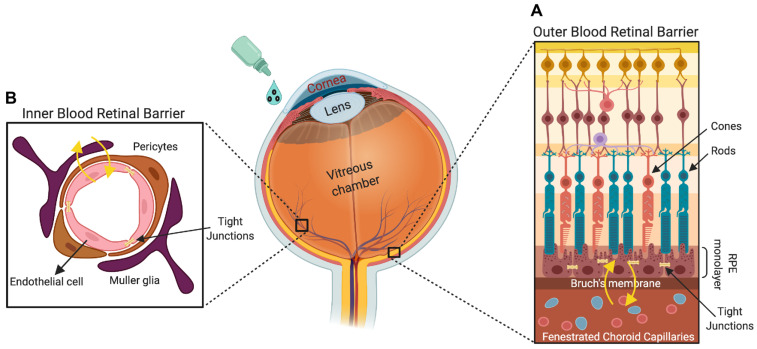Figure 1.
The retina is the innermost multilayered light-sensitive region of the eye, which has multiple barrier systems to regulate molecule, ion, and water flux out of the retina. The blood–retinal barrier is composed of two components: (A) the outer blood–retinal barrier, which comprises tight junctions that regulate paracellular trafficking between pigment epithelial cells, and (B) the inner blood–retinal barrier (comprising Müller cells, pericytes, and endothelial cells) formed by tight junctions that plug neighboring capillary endothelial cells. The tight junctions between retinal pigment epithelial and capillary endothelial cells form the outer and inner blood–retinal barriers, respectively, and these barriers regulate the retinal homeostasis and visual function.

